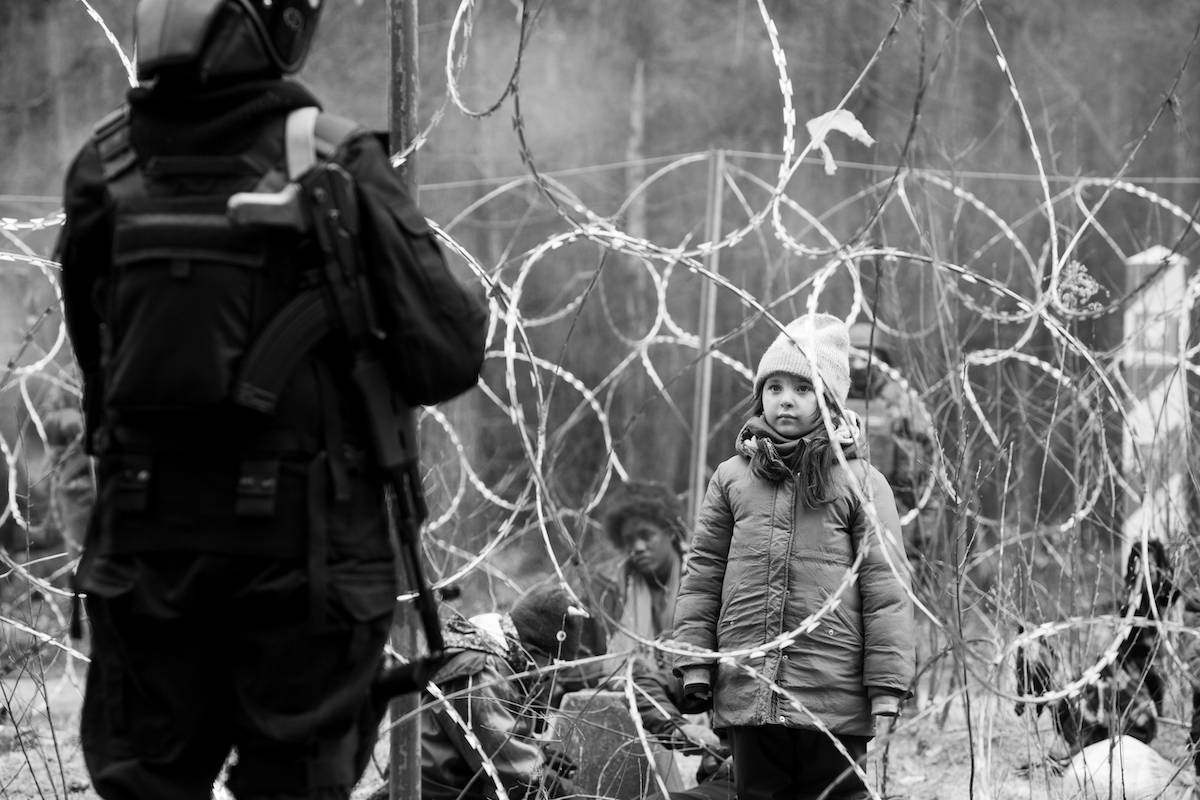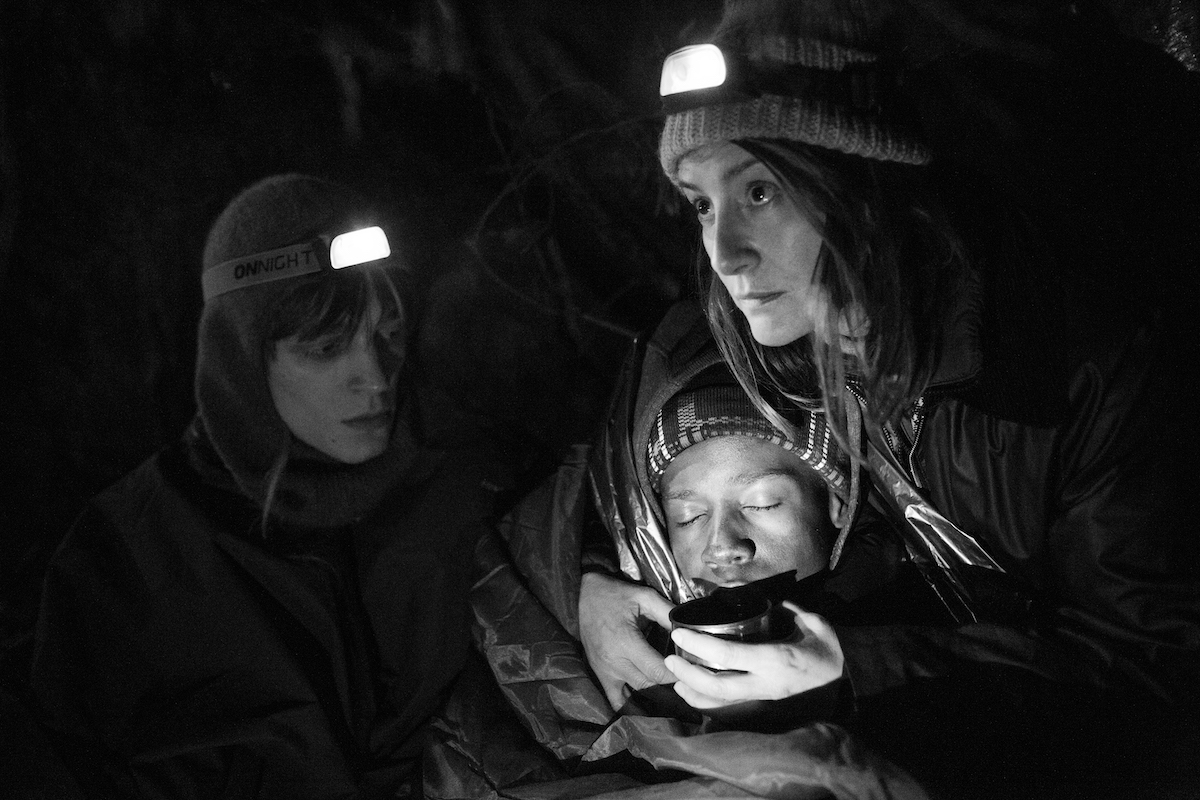In the treacherous and swampy forests that make up the so called “green border” between Belarus and Poland, refugees from the Middle East and Africa trying to reach the European Union are trapped in a geopolitical cri- sis cynically engineered by Belarusian dictator Alexander Lukashenko. In an attempt to provoke Europe, refugees are lured to the border by propa- ganda promising easy passage to the EU. Pawns in this hidden war, the lives of Julia, a newly minted activist who has given up her comfortable life, Jan, a young border guard, and a Syrian family intertwine.
30 years after EUROPA EUROPA, three-time Oscar Nominee Agnieszka Holland’s poignant new feature GREEN BORDER opens our eyes, speaks to the heart, and challenges us to reflect on the moral choices that fall to ordinary people every day.
More than 30 years ago, I made a film, EUROPA, EUROPA, about a Jewish boy who, to survive the Holocaust, first assumed the identity of a Stalinist communist youth, and then a soldier of the Wehrmacht and a student of an exclusive Hitler Youth school, becoming a young Nazi. It was 1989 and the Berlin Wall had just fallen. The double title was meant to express the duality of the European tradition: Europe of our aspirations, the cradle of culture and civilization, the rule of law and democracy, human rights, equality, and fraternity, but on the other hand, Europe as the cradle of the worst crimes against humanity, selfishness and hatred.
In 1989, the year of the fall of the Berlin Wall and the victory of Solidarity, it seemed that this first Europe was winning-but I always felt that the dark side was only lying dormant and could reawaken at any time.
Today-30 years later-we face a similar dilemma. The” Holocaust inoculation” has stopped working. The snake’s egg has matured…
After World War II, Western countries understood that the right to asylum had to be a basic human right in order to integrate morally broken societies and respond to the challenges of inequality.
Respect for this right has been gradually eroding-even being disregarded completely in the European Union in recent years as it turns into a fortress while its enemies-like Putin and Lukashenko-use war and the misery of refugees fleeing conflict as a kind of hybrid weapon.
In the autumn of 2021, a wave of refugees from various countries (Afghanistan, Syria, Iraq, Yemen, Congo) was lured by Lukashenko to the Belarusian border with Poland and Lithuania. Lukashenko’s propaganda had made them believe that they would easily be able to cross the border into the European Union and find themselves in a paradise, which is what wealthy, democratic Europe is for people tormented by wars, poverty and violence.
The Polish authorities, conveniently forgetting that they were dealing with living people, considered them hybrid missiles, spinning propaganda invoking threats, disgust and fear. They were not people seeking refuge in our country, but Putin’s missiles attacking our sacred borders; a bunch of terrorists, pedophiles and zoophiles. Thus, the uniformed services had no problem with violating international law; the captured refugees, including women, the sick, children, and the elderly, were pushed back to Belarus, where torture, beatings, starvation, and rape awaited them, or they were abandoned in the “death zone”, where the prospect was (and still is) death in the woods from hypothermia, starvation, or drowning in the swamps. The forest on the Polish-Belarusian border is one of the last primeval forests in Europe-both monumental and treacherous. The authorities cut the media and all humanitarian and medical aid off from that one. Many Poles agreed with these methods, and the European Union did not protest either-happy that the problem was being solved without its involvement. But a large part of the local population and young activists, confronted with the suffering and fear of innocent people, reacted normally: these people must be helped.

The fate of these migrants, and the humanitarian catastrophe they were facing in a place less than three hours from Warsaw, moved me: I saw in their situation something poignantly symbolic and-perhaps-a prequel to a drama that could lead to the moral (and also political) collapse of our world.
Right now-as I write these words-the tragic war in Ukraine has been going on for over a year. The world, by the will of a single dictator, is facing the prospect of total change, a huge global threat. Hundreds of thousands of Ukrainian war refugees are crossing the Polish border every day. They are met with a huge wave of solidarity and help; both from the public and also from the Polish authorities, which were previously so reluctant to accept the victims of other humanitarian crises.
Poles are justifiably proud of their hospitality-and only a few ask why it is so selective and why Europe and its governments apply double standards to people fleeing war.
Once again, many refugees are wandering around the woods on the Polish-Belarusian border; once again being tortured, pushed back to Belarus, and dying.
The oppression of the activists rescuing them is getting harsher, and the behavior of the Polish border guards-the same ones who carry Ukrainian children across the border with tenderness and empathy-is becoming more brutal. This difference in the treatment of these two different groups of war refugees brutally exposes what we try to hide: our European racism.
The people and events we depict are not accompanied by the pathos of heroism and patriotism. The basic difference between the refugees in our story and those who are crossing Ukraine’ s borders today is simple: the color of their skin. They have all been confronted with a choice none of them was prepared for, but which they have to face. The protagonists of the other threads of our story also face such a choice. The different points of view come together to create as complete a picture as possible.
I think that in their story, just as in a drop of water, our European duality is reflected- the duality I was thinking about when I gave my film the double title Europa, Europa 30 years ago.
Cinema is not completely powerless – it can show the truth about the world and human fate polyphonically, from different points of view. It can illuminate difficult human choices, helplessness, and the invisibility of some beings with the light of pathos and pull them out of the shadows. It can pose questions that we don’t know the answers to, but by asking them we can make a little more sense of the world.

Politics and politicians determine our lives, but what interests me most is how their actions, choices and inactions imprint themselves on the lives of ordinary people and the choices they face.
That’s why we took three very different perspectives to tell this story: those of a family of Syrian refugees, a young border guard, and an activist in spite of herself-a fifty-year- old woman who can’t help but respond to the cries of those in need.
The script for The Green Border brings together these different fates and viewpoints, interweaving them strategically, and connecting them.
The cinematic style of the film is revealed in the mood board. The action will be told in a quasi-documentary style, with close-ups and a fast-moving camera that often trails closely behind the characters. But the moment the camera stops, the terror escalates, amplified by the light, turning the forest into an almost Gothic maze from the dark tales of the Brothers Grimm-Hansel and Gretel lost in the void of the woods; the sounds of nature interrupted by the noises of menacing patrolmen/human-hunters; a horror-like atmosphere. The reality of the migrants, trapped in an increasingly hostile environment, takes on archetypal, sensual and mystical features. The veristic para-documentary realism meets and combines here with symbolism.
The film’s narrative weaves together a few storylines, intercutting them with various points of view, then strategically separating them, only to reconnect them again. We’ll try to be very specific, to capture the context and particular situations in a very precise, veristic way and-at the same time-to express some more general, more global and relevant truth about the contemporary world and its challenges.
The characters must be vivid and real, their journey emotionally fulfilling. We want to be close to them, to follow them, to care and worry about them. ~ Agnieszka Holland










